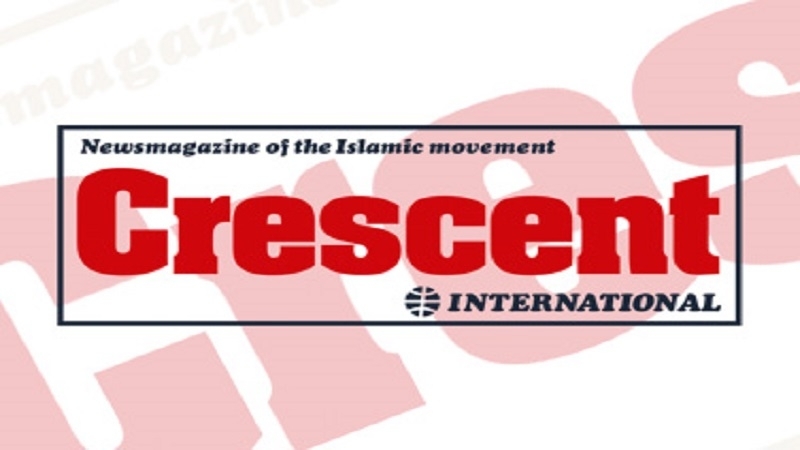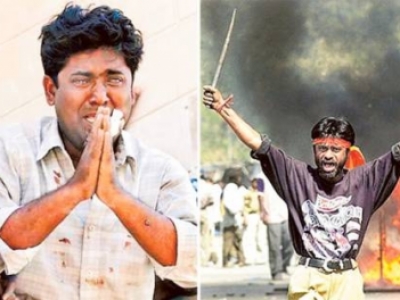Beneath the Indo-Pakistani war clouds, Muslims in Gujrat continue to suffer appalling hardships
Empowering Weak & OppressedCrescent International
Jumada' al-Ula' 06, 1423 2002-07-16
World
by Crescent International (World, Crescent International Vol. 31, No. 10, Jumada' al-Ula', 1423)
The war-clouds of Indo-Pak nuclear conflict have cleared temporarily, and so has media attention. The Vajpayee government had to keep the media and public distracted, lest they turn their attention to Gujrat. “Cross-border terrorism”, “infiltration” of “ ISI-backed terrorists”, and the RSS’s recommendation for the “trifurcating of Jammu and Kashmir” were all red rags to divert the bulls. Vajpayee’s immediate response was to expand and shuffle his cabinet. Home minister L. K. Advani became deputy prime minister; foreign minister Jaswant Singh and finance minister Yashwanth Sinha were ordered to exchange portfolios.
The first statement of the new foreign minister was that India needs to be “very, very careful” in its dealings with the Pakistani president, Pervez Musharraf. “He tried to backtrack from his assurance not once but three to four times,” Sinha told journalists. He was apparently referring to General Musharraf’s interview with Newsweek and the BBC, in which Musharraf claimed that he had not committed himself to stopping infiltration permanently.
The new finance minister, Jaswant Singh, promised what India has failed to accomplish in 55 years after independence. He said that his new job was about ensuring “food for the poor and more money for everyone”. What a joke from the finance minister of a country two-thirds of whose people live below the poverty-line. The new deputy prime minister reported to the Sangh Parivar leaders for their blessing.
The hype created was, however, not enough to whitewash events in Gujrat. On July 3 the Forensic Science Laboratory (FSL) issued a report questioning the Gujrat government’s theory of “conspiracy” by Muslims in the Godhra train-carnage. The Gujrat Congress president, Amirish Choudhary, accused the Sangh Parivar of having stage-managed the Godhra incident in order to instigate the subsequent anti-Muslim pogrom. Choudhary claimed that the FSL report contradicted Narendra Modi’s government’s assertion that Muslims had set fire to the train from outside, and that the kind of material used to burn the train was same as that used to burn Muslim properties in the post-Godhra genocide.
Debates, investigations, reports are futile if they fail to address the plight of Muslims in Gujrat, four months after the genocide began. The new threat to them is the Jaganath rath yathra, scheduled for July 12. This is an annual Hindu procession; it will pass through several sensitive areas. The procession has a brutal history: it has been the flashpoint for anti-Muslim riots several times in its 125-year history, particularly in 1985 and 1992. Despite recommendations from security advisors and human-rights organizations, the Temple trust insists that a change would ‘hurt’ the ‘sentiments’ of the people.
Hundreds of Muslim families in Dariapur, Shahpur, and other Muslim-dominated areas on the route of the procession are moving out of Gujrat. Their terror is that the rath yathra might set off another round of riots. This fear has gripped even the Muslim-dominated localities in Juhapura, from where 200 families have moved out or are in the process of moving out until the procession is over. Juhapur is away from the procession route, but Muslims there are fearful because of an attack last month in which the police joined hooligans to beat up Muslims. The organisers of the Muslim relief-camps are worried that many Muslims might flock to the camps as the procession date approaches. Despite the state government’s efforts to close down all but three relief-camps, at least 10 are still running, sheltering more than 20,000 families because they refuse to return to their homes until the rath yathra is over.
Ten relief-camps and 10,000 inmates: these are the Ahmedabad district collector K. Srinivas’s official figures. In reality, there are more than 15,000 refugees in 15 more camps, “officially closed” and hence out of the government’s consideration. Harsh Mander, the director of Action Aid and a member of the Forum for Relief and Reconciliation, reported to the prime minister on July 2 that these 15,000 “invisible” refugees are denied rations and medical aid. Mander resigned from the India Administrative Service over the Gujrat genocide and the state government’s “indifference” to its victims. Abdul-Hameed, organiser of the Bakhar Shah Roza relief-camp in Gomtipur, which is ‘closed’ but still has more than 900 people there, said that on June 15 a number of camp-organisers met the collector and asked him to issue ration-cards and arrange protection for families to return to their homes. The organisers also asked for a survey of damaged properties, and for immediate compensation. On June 18, ignoring his earlier promises, the collector informed the organisers that the camps had been declared closed and that the organisers were solely responsible for those still there. Since then food, water, electricity, sanitation facilities, visiting doctors and all other facilities have been withdrawn.
The state government has so far refused to accept the figures provided by the camps’ organisers. In over 160 relief-camps in various districts of Gujrat, more than 100,000 survivors are crammed; the Gujrat government’s official figures are much lower. According to the latest government survey, there are 725 people at Vatva relief-camp; the organisers, however, say that there are about 2,000. The ‘compensation’ provided by the government has also angered the victims. Most have not been paid any at all. Babubhai Abdul-Hameed died of a heart attack on May 2 when he received a cheque for R5,000 ($100) as ‘compensation’ for his burnt house and shop.
The Gujrat government had announced that it would pay $2,000 to the nearest kin of every person killed in the genocide. The prime minister also promised a similar amount. Some have refused to accept the derisory amounts offered. The victim who has received most is Jehanatbibi Muhammad Shah. After receiving $300 she asked, “how can I rebuild my looted and burnt house with this amount?” Some of the victims were told to produce proofs of their losses, including telephone and electricity bills. Others were asked to point out the positions of their homes, which had already vanished and over which temples and Hindu homes had been raised.
For those wishing to return to their villages, there are hard conditions. Hindus who killed their relatives by burning or lynching, raped their women, then stabbed and burnt them in order to destroy the evidence of their crimes, are now making their return difficult. The conditions vary from dropping charges of killings and rapes, to written assurances that Muslims will never fight a Hindu, will stop eating beef and raising anti-Hindu and anti-India slogans, and so on. Some villages go further, demanding that their victims convert to Hinduism. In Kadwal, 250 km north of Ahmedabad, Hindus prepared a three-page handwritten document in Gujrati, which could not even be photocopied. “We [Hindus] have collectively drawn up a list of conditions which Muslims have to sign if they want to return. In other villages they are not even allowing Muslims to return but we are not doing that here,” said Bharat Singh, a village leader.
Spread of contagious diseases is reported all over Gujrat, caused by the unhygienic conditions that prevail in all the camps. Organisers report that survivors are suffering from measles, bronchopneumonia, malaria, typhoid, diarrhoea and acute respiratory infections. Most Muslims are reluctant to go to government hospitals, fearing more threats to their lives if they venture outside the camps. Almost 95 percent of riot survivors are afflicted with mental disorders. The pogroms in Gujrat have left deep psychological scars in the victims’ minds. Mental-health experts report that insomnia, post-traumatic stress disorders, depression and other acute mental disorders affect the victims who witnessed rape and mutilation.
Disappointed by the Gujrat government’s attitude to the rehabilitation of Muslims, Muslim organisations and individuals are raising funds to solve the crisis. The Islamic Relief Committee (IRC) and Jami’at-e Ulama-e Hind (JUH) are funding projects to repair damaged houses, and are planning to sponsor new construction projects. Muslim individuals have also come forward. Teachers have opened makeshift schools for children in the camps; lawyers, doctors, midwives and other professionals are doing their bit. On May 30 a mass marriage-ceremony of 25-riot affected couples was held at Sonal relief-camp.
The People’s Union of Human Rights (PUHR) reports that around 500 mosques and dargas have been demolished and temples set up in their place. The report also states that during the pogrom ministers and Sangh Parivar leaders were sitting in police control-rooms and guiding the fanatics in their barbarities. The Concerned Citizens’ Tribunal (CCT) has unearthed information on how Bajrang Dal and VHP leaders made preparations for the ‘Muslim-cleansing’ at least six months before Godhra.
The systematic planning to create a mind set among the people to justify genocide is horrifying. According to Sangh Parivar leaders such as Ashok Singhal and Giriraj Kishore, the Gujrat events have created a consensus among Hindus that Muslims deserve no better. Even school-textbooks carry anti-Muslim lessons. One problem in a primary-school textbook asks students: “if 10 Kar sevaks were required to demolish a Mosque in 5 hours, how many would be required to demolish 100 Mosques in 3 days?” Other textbooks brand Muslims as foreigners. The economic boycott of Muslims called by the VHP has not only affected Muslim businessmen but a huge number of Muslim workers who have been sacked by their Hindu employers.
The ruling government is preparing for immediate elections before the ‘achievements’ of the genocide fade. The ruling party believes that chief minister Narendra Modi has brought the BJP back from near-oblivion to a “position of strength”. Hindu fanatics know well that Gujrat 2002 will be history very soon.
And, in the mean time, do the Indian Muslims’ leaders have any solutions.



